Tundaldevi Relief Inscription
Inscription at the bottom of a deity relief in the temple of Indaldevī (Tuṇdāldevī), Kathmandu. Saṃvat 397.
Lajampat Trivikrama Relief Inscription
OB00142 Deotek Stone Slab
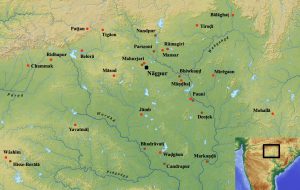
Ancient Vidarbha showing find-spots of Vākāṭaka inscriptions (Zenodo).
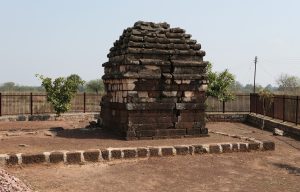
Deotek देवटक (Thana नागभीड, District Chandrapur, Maharashtra). Śiva temple of the circa 11th century.
OB00129 Haraha Stone of Suryavarman
Aphsad Inscription of Adityasena
IN00200 Ganj Inscription of Vyaghradeva
The Ganj stone inscription was located in 1919 by Rakhaladas Banerji. The inscription is inscribed on a loose slab lying close to the ruins of a structure which could possibly be a dam at the village of Ganj. The inscription is identical to the one found earlier at Nachnā-kī-talāi (IN00199). The inscription records the meritorious action of Vyāghradeva who is described in the inscription as meditating upon the feet of Pṛthivīṣeṇa. It is not been definitively proven whether the inscriptions refer to Pṛthivīṣeṇa I or Pṛthivīṣeṇa II. It is assumed that Vyāghradeva was a feudatory or officer under the Pṛthivīṣeṇa mentioned in the inscription.
IN00199 Nachna Inscription of Vyaghradeva
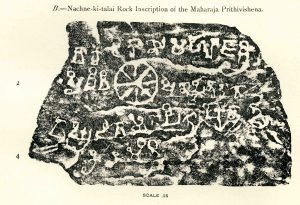
The Nachnā-kī-talāi stone inscription was located in 1883-84 by Alexander Cunningham. The inscription is inscribed on two sides of a loose slab which was found on the ground outside the fort of Kuṭhārā. The inscription is identical to the one found at Ganj. The inscription records the meritorious action of Vyāghradeva who is described in the inscription as meditating upon the feet of Pṛthivīṣeṇa. It has not been definitively proven whether the inscriptions refer to Pṛthivīṣeṇa I or Pṛthivīṣeṇa II. It is assumed that Vyāghradeva was a feudatory or officer under the Pṛthivīṣeṇa mentioned in the inscription.
IN00198 Nachna Unfinished Inscription of Vyaghradeva
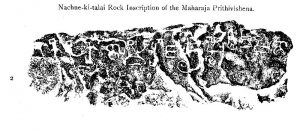
The Nachnā-kī-talāi stone inscription was located in 1883-84 by Alexander Cunningham. The inscription is inscribed on two sides of a loose slab which was found on the ground outside the fort of Kuṭhārā. The inscription is identical to the one found at Ganj. The inscription records the meritorious action of Vyāghradeva who is described in the inscription as meditating upon the feet of Pṛthivīṣeṇa. It has not been definitively proven whether the inscriptions refer to Pṛthivīṣeṇa I or Pṛthivīṣeṇa II. It is assumed that Vyāghradeva was a feudatory or officer under the Pṛthivīṣeṇa mentioned in the inscription.
IN00192 Hisse-Borala Inscription of Devasena


The four lined stone inscription was first published in 1963-64. It was discovered in what is considered to be a wall of ancient bricks which appear to have made a dam near the village of Hisse-Borālā. The inscription, which is dated to the reign of Devasena, contains a reference to the Śaka year 380 (i.e. A.D. 458-59), which is the earliest known reference to the Śaka era within the Vidarbha region. The inscription records the construction of a tank called Sudraśena by Svāmilladeva, an officer of Devasena.
IN00155 Deotek Inscription of Rudrasena
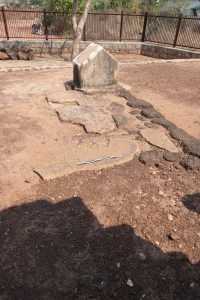
Deotek देवटक (Thana नागभीड, District Chandrapur, Maharashtra). Temple foundations, showing find spot of the inscribed slab now in the Central Museum, Nagpur.